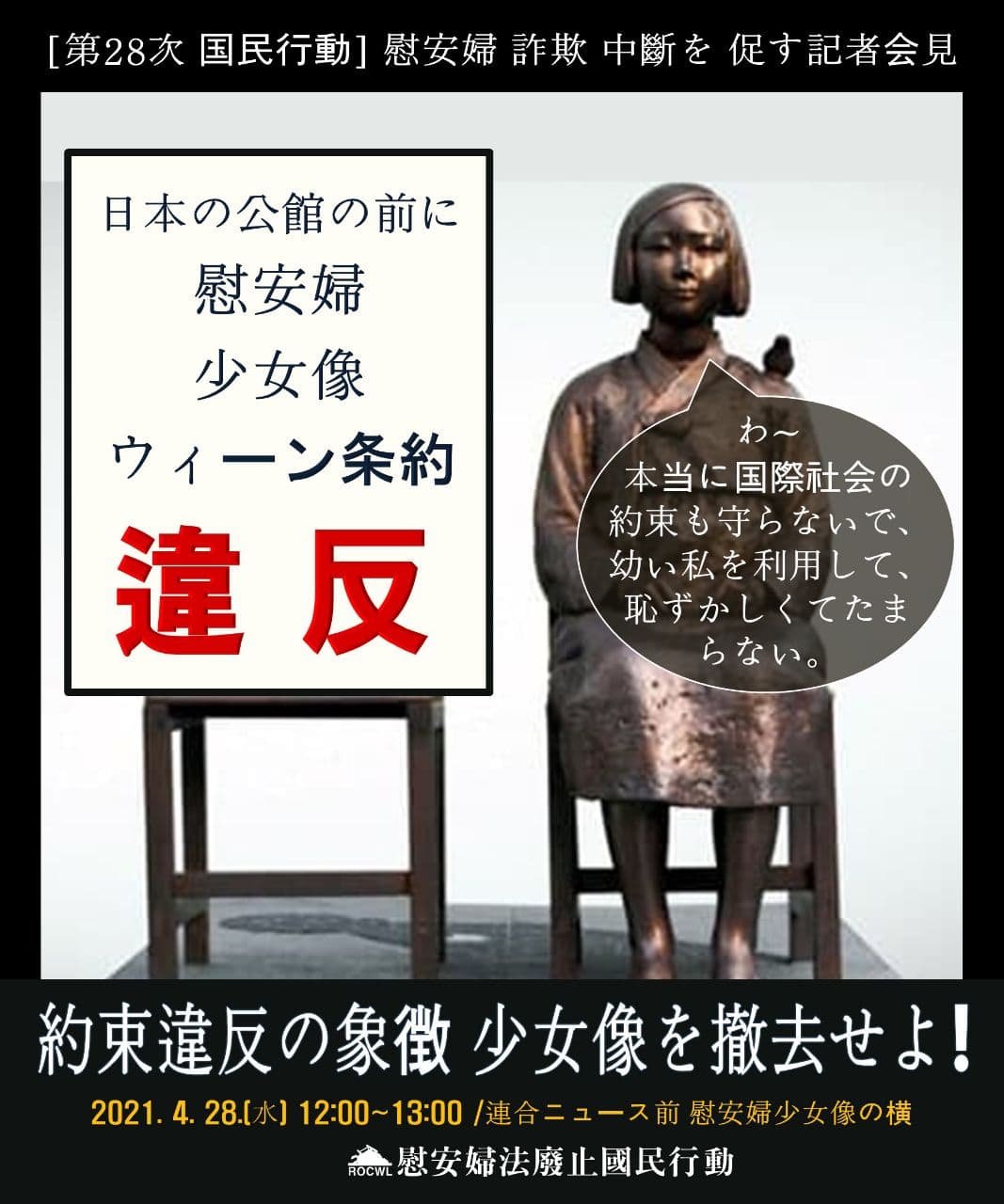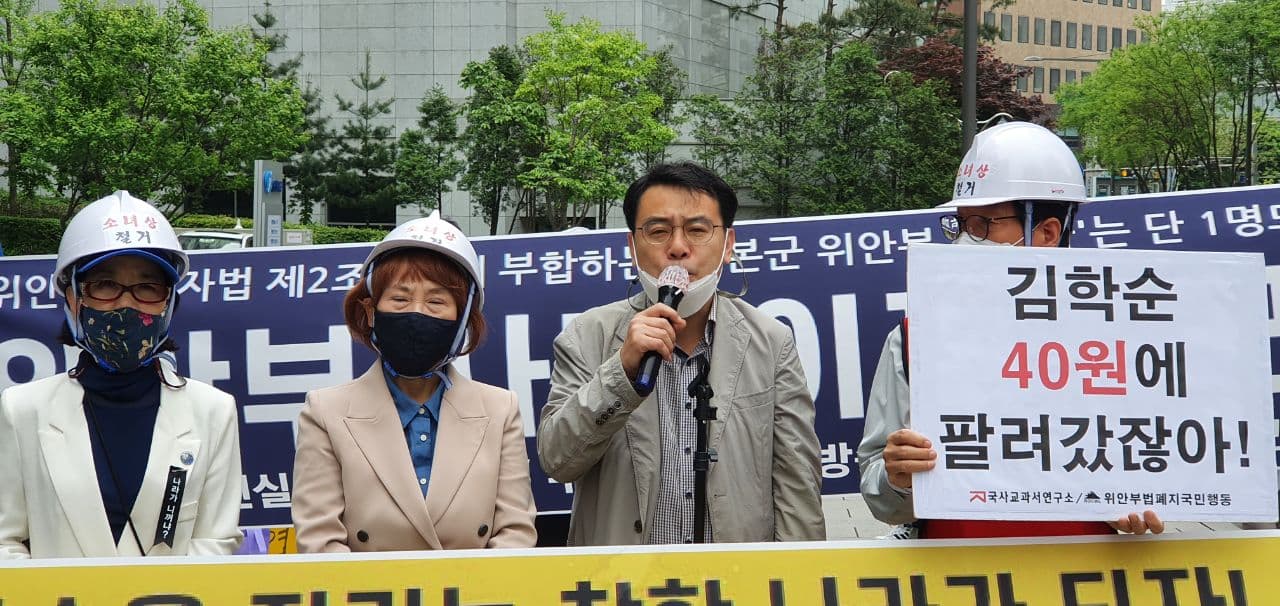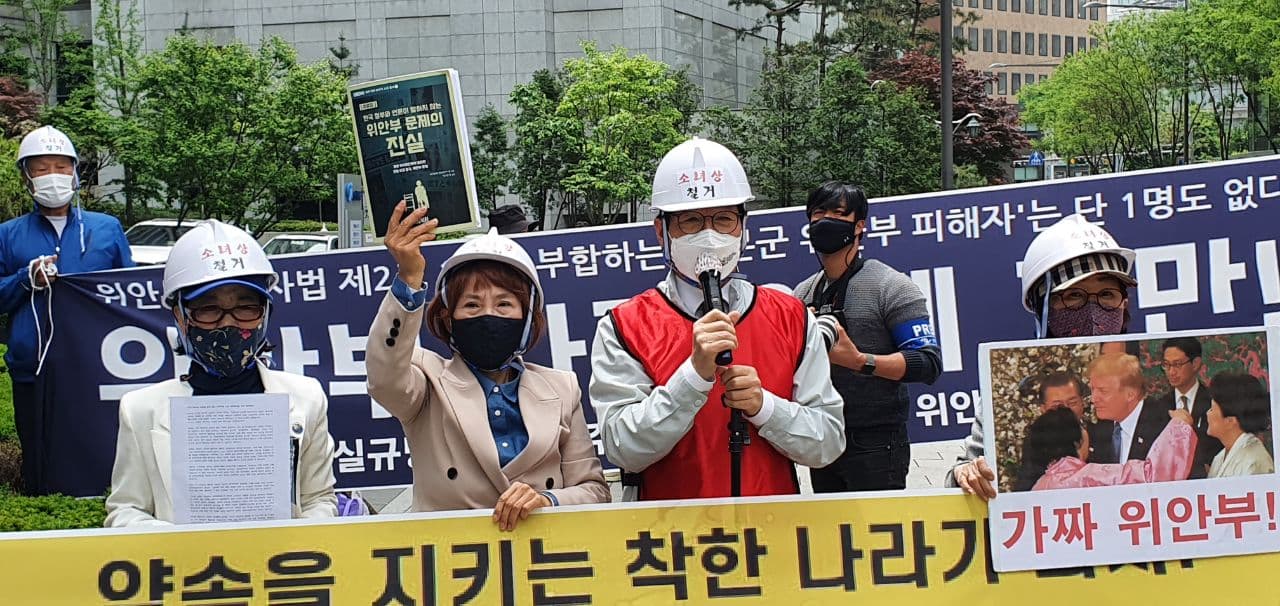[横断幕]鐘路区長は凶物、少女像の公共造形物 登録を取り消せ❗️

ソウルの鐘路区、日本大使館前に設置されている慰安婦像。設置当初は違法設置でしたが、鐘路区は像を公共造形物第1号に指定·登録し、撤去や移転ができないように法的根拠を作りました。
2021年5月12日、韓国の市民団体が抗議書簡「像公共造形物登録を取り消せ!」を鐘路区庁長に提出。
 「少女像撤去」ヘルメットに「全国少女像撤去班」ジャケット
「少女像撤去」ヘルメットに「全国少女像撤去班」ジャケット
 鐘路区庁長宛て書簡文を手交
鐘路区庁長宛て書簡文を手交

その書簡全文をご紹介します。
***************************************************
2021. 5. 12. 慰安婦法廢止國民行動
鐘路区庁長への書簡
鐘路区庁長のキム·ヨンジョン氏は、「少女像公共造形物登録を取り消せ!」
目下大韓民国は野蛮の国だ。
原則が崩れ、法治が崩れ、国家間の信頼が崩れ落ちた野蛮な国だ。 嘘をついても堂々とし、約束を破って大声を出す国に転落した。
社会指導層が食言と違約を主導し、真実の報道とは塀を隔て、そしてメディアがこれを伝え、真実を歪曲·捏造する社会運動団体が善良な国民に宣伝·扇動を通し洗脳してきた。
また政府と地方自治体では、必要に応じて条例を変え、立場によって法を無視し、国民感情に便乗して国家間の約束も惜しげもなく捨ててしまう国が大韓民国である。
このすべての事が日本大使館前の慰安婦少女像を中心に繰り広げられている恥ずべき私たちの今日の姿だ。
「10代初めの幼い少女が日本軍に連行され、鉄条網を敷いた慰安所に監禁されたまま、無慈悲に性的暴行を受け、病気になれば捨てられるか、殺害後に燃やされる」と鳥肌が立つほど平然と嘘を吐いた。
「この世界どの国の軍隊を問わず、政府と軍隊が主導し、民間人を拉致・強姦・殺害することはない」というあまりにも当たり前の声や、「雇用契約によって占領地の合法的な慰安所で働いていた職業女性が、まさに日本軍慰安婦である」と発信する研究者の声も’親日極右の妄言’と認識され、埋もれてしまう。
貧しい国、貧しい親のせいで不幸な過去を持った慰安婦履歴の老人たちはある瞬間銃剣で武装した日本軍の性奴隷被害者に化けて人権蹂躙を告発する運動家となり、戦争犯罪防止に向けた制度の中で働いた女性たちがいつのまにか内戦との激戦地で行われている戦争犯罪の被害者になって戦争終結を訴える平和の使徒となった。
そしていつからか彼らは、不憫な’おばあさん’という名前で国民と世界の同情の中に余生を過ごして一つ二つ、歳月の裏舞台で消える中で、再び10代前半や半ばの幼い少女によみがえって永久に日本に向かって無言の圧力を行使する日本軍慰安婦被害者の象徴になったまま日本大使館前につくねんと座っている。
しかし、このような’平和の少女像’は慰安婦になれない10代前半や半ばの幼い少女を形象化した歪曲・捏造の象徴であり、外交関係に関するウィーン条約を違反した約束違反のシンボルであるだけだ。
2011年末、外国公館の安寧を侵害し、品位を損なう恐れがあるため、政治的な造形物を設置することができない場所に、補欠選挙で当選したパク·ウォンスン(朴元淳)故ソウル市長やキム·ヨンジョン(金永宗)チョンノ(鍾路)区庁長の積極的な支援により、この少女像が設置された。
当初、碑石で建てる計画だったこの造形物は、碑石の場合苦情が入りやすく、公権力もまたこれを防ぐことが難しいが、少女の姿をした芸術作品の場合は法的な問題は避けやすく、もっと意味があるという当時鍾路区庁長だった金暎宗(キム·ヨンジョン)氏の提案により、今の姿に設置された。
その後、鐘路区は公共造形物第1号に指定·登録し、むやみに撤去したり移転したりできないよう、大釘を打つ法的根拠を設けた。
区の関係者は「これまで撤去するかしないかをめぐり論議が起こっていた平和の少女像をむやみに撤去·移転できないように確実な法的根拠を準備した」と説明した。
キムヨンジョン鍾路区庁長や区の関係者には慰安婦の真実や国家間の約束などは眼中になかったようだ。
歪曲と憎悪の象徴である慰安婦少女像が建てられた日本大使館前はもう慰安婦の聖地となっており、少女像は、与野党を問わず多くの政治家たちが花を捧げて敬拝する偶像になってしまった。
彼らに’慰安婦実体歪曲’や’ウィーン条約違反’という認識が爪ほどあっただろうか。
1992年1月8日、宮沢前日本首相の訪韓を機に始まったでもの1,000度目を記念して設置された慰安婦少女像は単なる芸術彫刻作品ではなく、崇拝の対象であり、反日宣伝・扇動の道具となった。
名前は美しいこの上ない「平和の少女像」だが、平和とは程遠い反目と葛藤の火種になってしまったのだ。
このすべての歴史歪曲と信頼喪失には真実に背を向け、国家間の約束を無視してまで支援を惜しまなかった金永宗鐘路区庁長の役割を決して見過ごすことはできない。
さらに、キム·ヨンジョン区庁長は、昨年コロナ19が拡散した際にも、他の地域での集会は禁止したものの、少女像の前での集会は黙認していたが、正義連側からの集会の申請を受け、少女像の集会をこれ以上進めることができなくなったため、今年7月に突然コロナ19の拡散防止を理由に少女像があるユルゴク路2通り一帯を集会制限区域として追加告示し、事実上正義連側の集会を継続することを支援する役割を果たした。
そのため、我々は慰安婦真実を歪曲して、ウィーン条約を違反したまま、慰安婦少女像の設置を積極的に支援した鍾路(チョンノ)区庁長に次のように要求する。
1、日本大使館前の慰安婦少女像に対する公共の造形物登録を即時中止せよ!
2、慰安婦の実態を歪曲してウィーン条約を違反した慰安婦少女像を撤去せよ!
2021. 5. 12
慰安婦法廢止國民行動
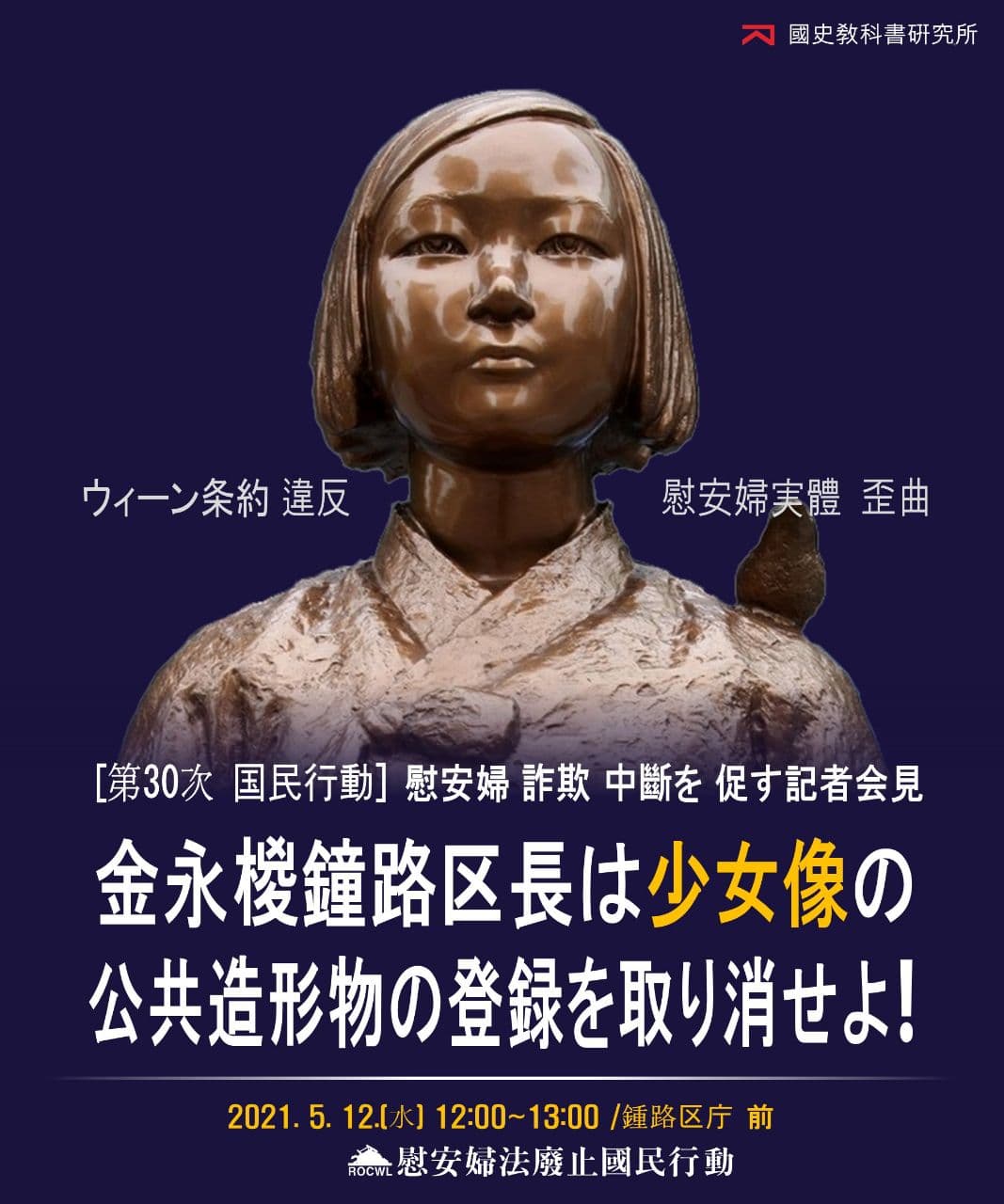



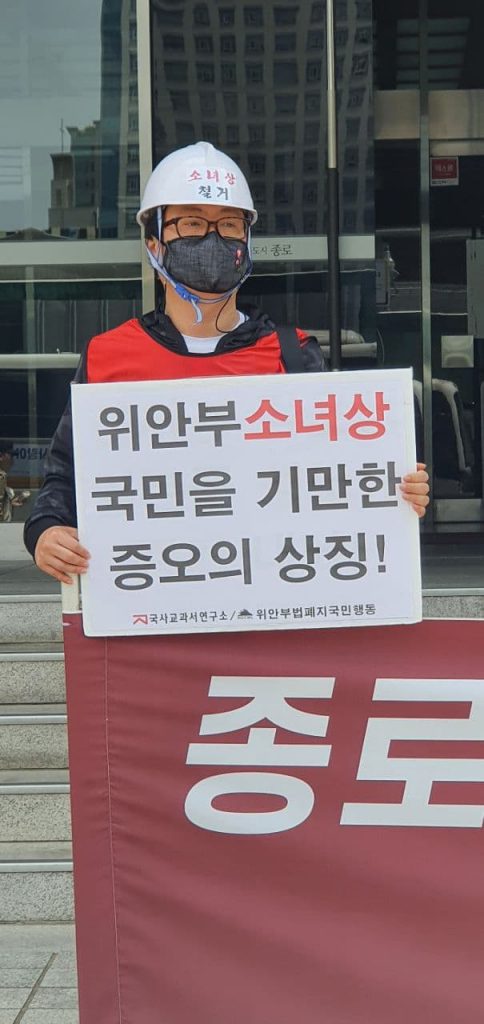
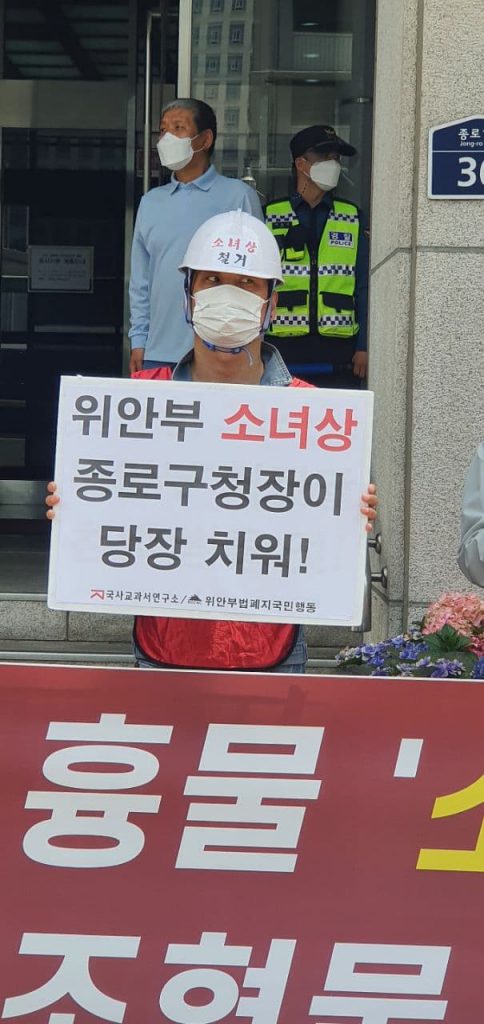






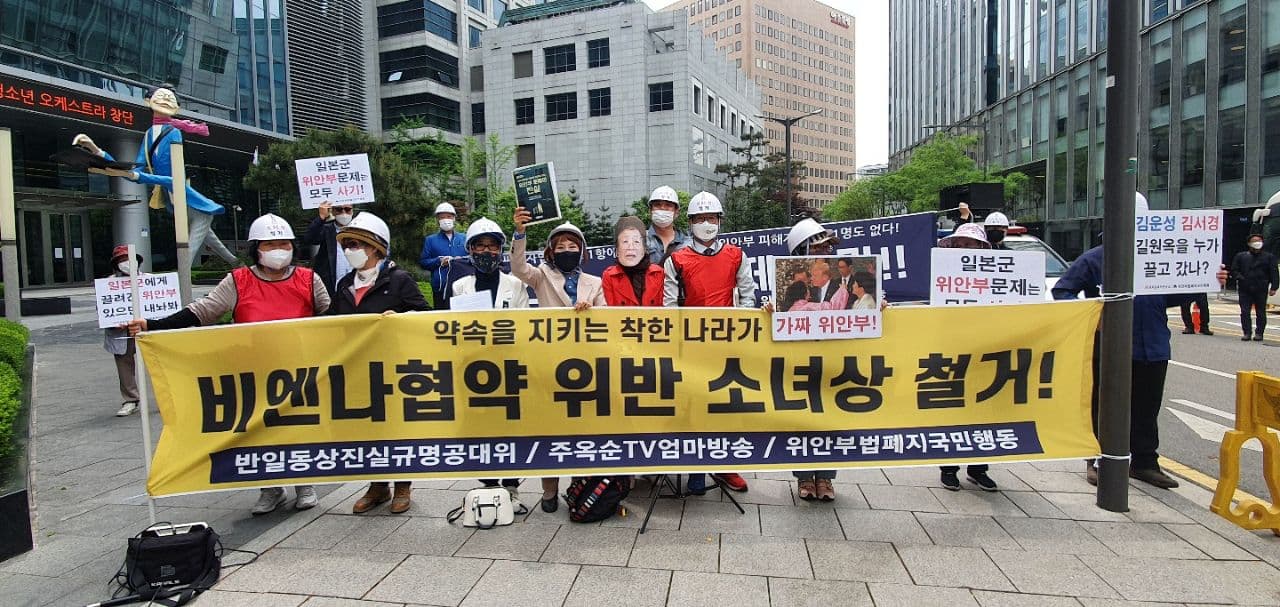
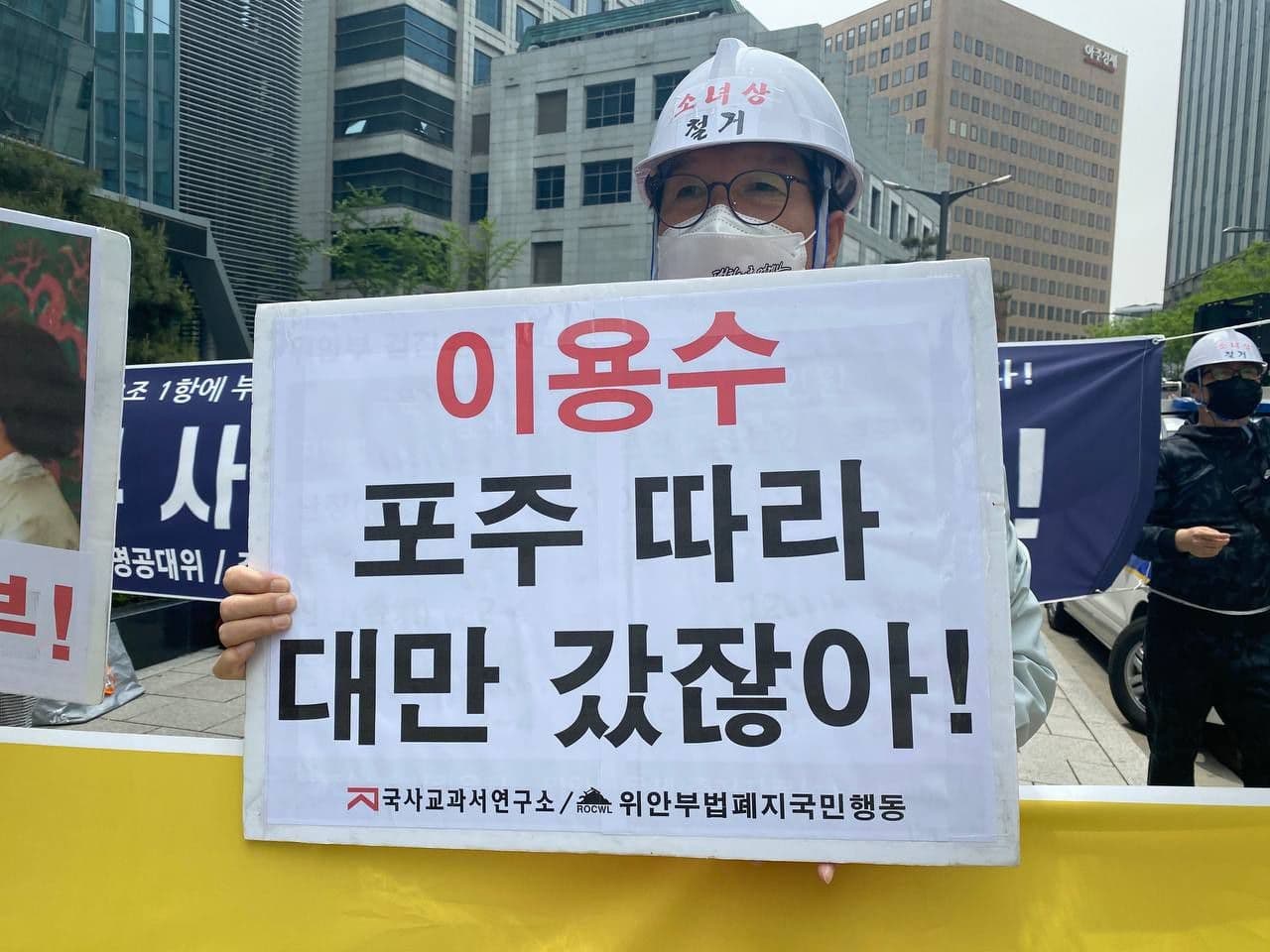 「少女像撤去」ヘルメット
「少女像撤去」ヘルメット
